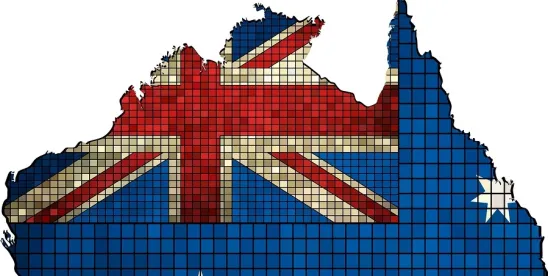WHAT IS THE PAYMENT TIMES REPORTING SCHEME?
The Payment Times Reporting Scheme aims to improve payment outcomes for small businesses, who will have access to payment performance information submitted by reporting entities. It is governed by the Payment Times Reporting Act 2020 (Cth), Payment Times Reporting Rules 2020 (Cth) (Act) and Payment Times Reporting (Form and Manner for Giving Report) Instrument 2021 (Cth) (collectively, the Scheme).
The Scheme commenced on 1 January 2021, with the first reporting window opened on 1 July 2021.
The Scheme only prescribes a requirement on large businesses (see reporting entity below) to report on their payment information. However, the Scheme has significant implications for small businesses, who can now track the payment periods and payment performance of large businesses through the register.
Small businesses may also wish to consider opting out of the Small Business Identification Tool (SBIT) if they do not want to be identified as a small business.
The Department of Industry, Science, Energy and Resources, which oversees the Scheme, has identified that:
"Long (after 30 days) and late payments are a significant problem for Australia's 3.5 million small businesses. This has negative impacts not only on these businesses but also more broadly across the economy. Small businesses that are paid slowly pay their suppliers more slowly in turn."
This in turn impacts on cash flows which, especially in the current environment, can be a make or break situation sometimes leading to bankruptcy and closures.
WHO REPORTS UNDER THE SCHEME?
A reporting entity is:
-
a trading or financial entity which is formed within the limits of the Commonwealth or a foreign corporation;
-
that carries on an enterprise in Australia;
-
meets the income threshold for the most recent income year, being either:
-
the total income for the entity was more than AU$100 million;
-
if the entity is a controlling corporation - the combined total income for all members of the controlling corporation's group was more than AU$100 million; or
-
if the entity is a member of the controlling corporations group – the total income for the entity was at least AU$10 million.
-
-
is not registered under the Australian Charities and Not-for-profits Commission Act 2012 (Cth).
The Scheme was designed to benefit small businesses. Under the Scheme, a small business is any entity who is described as such in the Payment Times SBIT. An entity will be considered a small business if, during an income year for the entity, it carries on an enterprise in Australia and its annual turnover was less than AU$10 million for the most recent income year. A small business can opt out of being identified by the SBIT, however that does mean that a large businesses will not report on their payment times and terms to that small business.
WHAT NEEDS TO BE REPORTED BY THE REPORTING ENTITY?
The reporting entity will need to complete reports every six months of an income year (each a reporting period), which are due within three months of the end of the reporting period. The reporting entity currently needs to report on the following:
-
general information i.e., the entities name, ABN (if applicable), description of entity's main business activity, reporting period to which the report relates;
-
statement on the standard payment periods for the entity at the start of the reporting period, including details about any changes to the standard payment periods;
-
the proportion, determine by total number and total value (the rules have guidance on how to calculate this), of small business invoices paid by the entity were paid in accordance with each of the following:
-
within 20 days after the day (the issue day) the relevant small business invoice was issued;
-
between 21 and 30 days after the issue day;
-
between 31 and 60 days after the issue day;
-
between 61 and 90 days after the issue day;
-
between 91 and 120 days after the issue day; and
-
more than 120 days after the issue day.
-
- the proportion, determined by total value of all procurement by the entity that was procurement from small business suppliers;
-
details about any principle governing body or controlling corporation (if applicable);
-
a declaration by a responsible member that the report will be provided to the principle governing body of the entity;
-
the name and contact details of the individual giving the report to the Regulator;
-
if a notifiable event has occurred since the last payment times report, include details of the notifiable event; and
-
any other information or documents prescribed by the rules. Currently, the following is prescribed by the rules:
-
details of practices or arrangements used by the entity for receiving or paying small business invoices;
-
details of any practices or arrangements used by the entity through which a small business is required to pay an amount, including a subscription or membership fee to participate in the entity's procurement process (including lodging a tender) or for the entity to accept a small business invoice issued by the small business;
-
if the entity used small business supply chain finance arrangements during the reporting period – which the rules prescribe certain information to be provided if this is applicable;
-
a statement on whether small businesses were required to agree to use small business supply chain finance arrangements to participate in the entity’s procurement processes or to receive payments in relation to small business invoices;
-
a statement on when the report will be provided to the principal governing body of the entity;
-
if the entity is a member of a group of related entities that has a head entity, and the head entity is not a controlling corporation identified in the report—information identifying the head entity; and
-
any additional information providing context or explanation in relation to other information included in the payment times report.
-
The reporting entity will need to ensure that the report is signed by a responsible member, state the name of that person and include the date it was signed.
DO ANY PENALTIES APPLY UNDER THE SCHEME?
Yes, there are multiple penalties identified in the Act. This includes if a reporting entity fails to give a payment times report or if a reporting entity gives a payment times report but it contains false or misleading material.
The Department of Industry, Science, Energy and Resources (DISER) have stated that the Payment Times Reporting Regulator will generally adopt a graduated approach to compliance and enforcement. The Regulator may use more coercive compliance and enforcement tools if reporting entities demonstrate significant or repeated failure to comply with the Act.
For more information, contact our team or go to the DISER website - click here.




 />i
/>i

